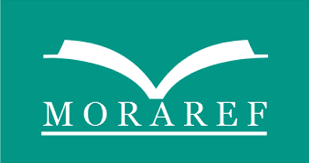Analysis Of Effective Communication On Employee Performance Improvement At PT. Kencana Mulia Abadi Sibolga
Keywords:
Effective, Communication, Employee PerformanceAbstract
Analysis of Effective Communication on Employee Performance Improvement at PT. Kencana Mulia Abadi Sibolga. Performance improvement can be achieved through the implementation of effective communication. This study aims to analyze the impact of effective communication on employee performance improvement at PT. Kencana Mulia Abadi Sibolga. The population in this study consists of all employees of PT. Kencana Mulia Abadi Sibolga, totaling 31 individuals, who were also used as the research sample. Based on the research findings, there is a positive relationship between effective communication and employee performance improvement at PT. Kencana Mulia Abadi Sibolga. This is evidenced by the increase in the number of consumers over the past five years, totaling 310 individuals. The study results indicate a positive correlation between effective communication and employee performance at PT. Kencana Mulia Abadi Sibolga, with a correlation coefficient of 0.757, which, when interpreted on a scale, falls into the moderate category. The regression equation obtained is: Y = 12.491 + 0.637X, which demonstrates the influence of effective communication on employee performance. The t-test results show that the proposed hypothesis is accepted, as t-calculated (6.241) > t-table (2.0452). This means that employee performance increases by the regression coefficient/slope (0.573) for every unit increase in the effective communication variable. Meanwhile, the coefficient of determination reveals that effective communication contributes only 57.3% to employee performance at PT. Kencana Mulia Abadi Sibolga, while the remaining 42.7% is influenced by other factors not examined in this study.
Downloads
References
A Sardiman , 2005 Efektivitas Kerja . Malang : Bayu Media.
Dantes Nyoman. 2012.Metode penelitian.Yogyakarta :Andi Offset.
Gaffar. 2007. Pengantar Bisnis, Liberty, Yogyakarta Gaffar. 2007. Pengantar Bisnis, Liberty, Yogyakarta
Irawan Handy. 2008, 10 Prinsip KepuasanPelanggan. Jakarta : Elex Media Komputindo.
Jumadi. 2010. Desain Penelitian MSDM dan Perilaku Karyawan Paradigma Positivistik dan Berbasis Pemecahan Masalah, Jakarta : PT RajaGrafindo Persada.
Kartajaya Hermawan. 2010. Syariah Marketing. Bandung : PT Mizan Pustaka.
Mokodongan. 2010. Paradigma Baru Manajemen Sumber Daya Manusia, Penerbit Amara Book, Yogyakarta
Porter. 2002. Kiat meningkatkan Produktivitas Kerja, Rineka Cipta. Jakarta
Sangadji dan Sopiah. 2010. Metodologi Penelitian (Pendekatan Praktis Dalam Penelitian), Yogyakarta : Andi Offset.
Situmorang, dan Lufti., 2012, Analisis Data Penelitian(Menggunakan Program SPSS), Medan : USU Press
Stanton William. 2011.Bauran Pemasaran, Edisi VII, Jilid ke-2, Jakarta : Erlangga
STIE Al - Washliyah Sibolga / Tapanuli Tengah, 2020, Pedoman Penulisan dan Penyusunan Skripsi / Laporan Penelitian . Sibolga : STIE Al- Washliyah Sibolga/ Tapanuli Tengah.
Sugiyono. 2010. Metode Penelitian. Bandung : Alfabeta.
----------- 2012, Metode Penelitian Bisnis, cetakan ke enam belas, Bandung : Alfabeta
Sukmadinata. 2006. Landasan Psiklogi Proses Pendidikan. Bandung : Remaja Rosda Karya.
Tjiptono, Fandy, 2009, Strategi Pemasaran, Malang : Bayu Media.
Tunggal Amin Widjaja 2008. Pengantar Konsep Nilai Tambah Ekonomi (EVA) dan Value Based Management (VBM). Harvarindo.
Umar Husein. 2005Metode Penelitian. Jakarta : Salemba Empat.














